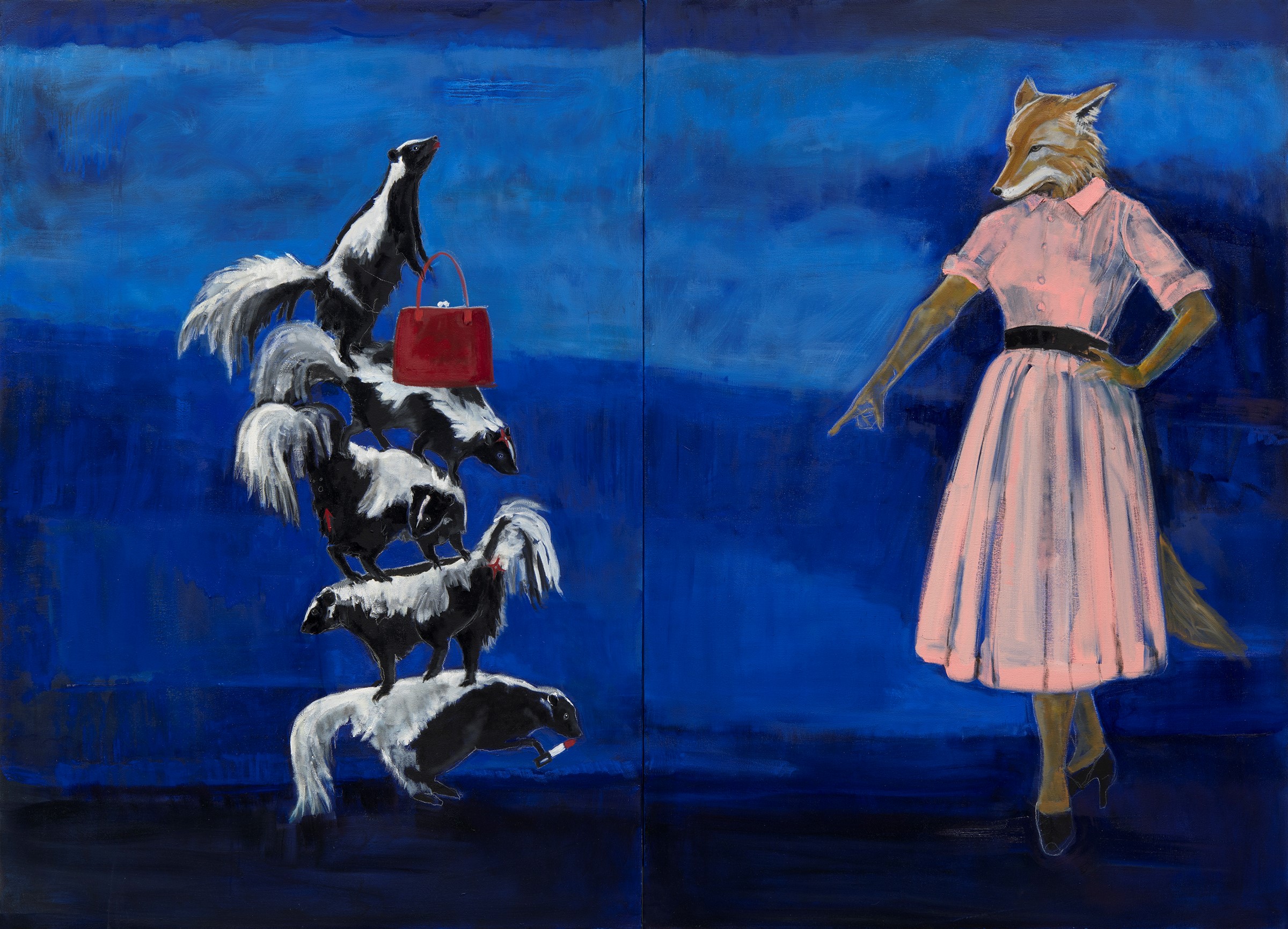The Local newsletter is your free, daily guide to life in Colorado. For locals, by locals.
Two of DAM’s current exhibitions, Eyes On: Julie Buffalohead and Eyes On: Shimabuku, center around depictions of creatures to explore ideas of identity, tradition, and inherited memory.With the unveiling of two new exhibits, the Denver Art Museum has brought Native arts front and center. As part of its ongoing Eyes On series, which highlights the work of contemporary artists that are lesser-known to Denverites, DAM has chosen to display the work of Julie Buffalohead and Shimabuku—two artists with totally different orientations and style that both incorporate the use of animals, symbolism, and heritage.
Eyes On: Shimabuku and Eyes On: Julie Buffalohead are both on view until January 2019 in the Hamilton building (which is still operating during the institution’s renovation of the towering North Building). Both exhibitions explore ideas of identity and inherited memory through the representation of animals.


“Do snow monkeys remember snow mountains?” by Shimabuku, an artist from Naha City, Japan, is a short video work loosely akin to a documentary film. In it, the artist creates a non-scientific experiment to determine if displaced macaques (native to subtropical and subarctic Japan) remember the snow of generations passed. The video shows the reactions of “Americanized” Japanese macaques—otherwise known as snow monkeys—from the Dilley, Texas desert as they’re exposed to a pile of ice. We won’t spoil the results, but DAM contemporary and modern art curator Rebecca Hart says Shimabuku is asserting a message about humanity and shared memory through the monkeys in the film.
Buffalohead, on the other hand, makes animals conduits through which she explores her own thoughts, life experiences, and the culture of the Ponca tribe of Oklahoma, of which she is a member. Before deep-hued backgrounds on wide canvases, animals such as coyotes and skunks interact in sometimes playful, sometimes dark human-esque scenarios. The Minnesota-based painter says the animals represent the seven clans of her tribe.
“I’m not being specific or illustrating anything specific about those clans,” she says. “A lot of it is more about some memories that I have, about going to my reservation, which is in northern Oklahoma. Some of it is about memories I have of my family there and being there.”
Here’s where we find these twin shows intriguing: In Buffalohead’s work, the artist is the subject, using animals featured in her ancestral culture’s teachings to ruminate, she says, on her own memories and inherited culture. But in Shimabuku’s exhibition, the artist makes monkeys subjective, experiencing—possibly—the inheritance of knowledge. Both artists use animals as a conduit to explore a set of beliefs and behaviors, but in very different ways.
Hart insists the exhibitions are not to be taken in conversation with one another, but instead are thematically correlated. The new shows are also connected to Stampede: Animals in Art, a cross-departmental exhibition that pulls works depicting animals from DAM’s permanent collection, in an effort to reveal how these creatures have influenced various cultures throughout generations. This show can be found on the third and fourth floors of the Hamilton Building.
You can catch Stampede: Animals in Art on view though May 2019, and Julie Buffalohead and Shimabuku’s exhibitions on view through January 2019.








